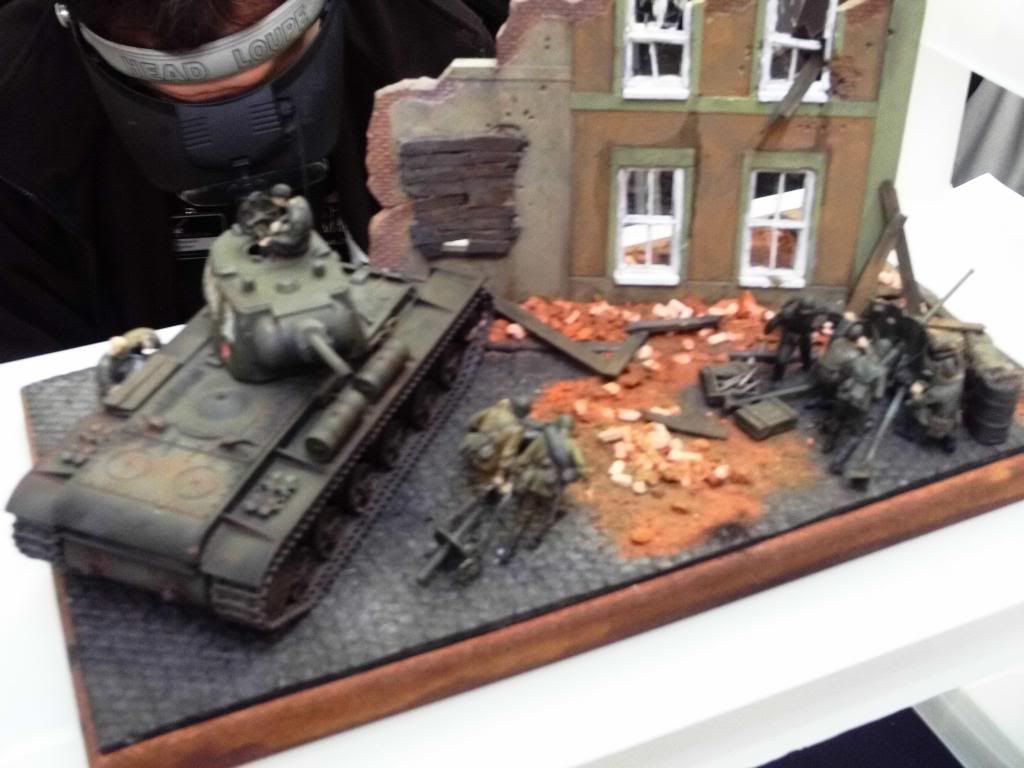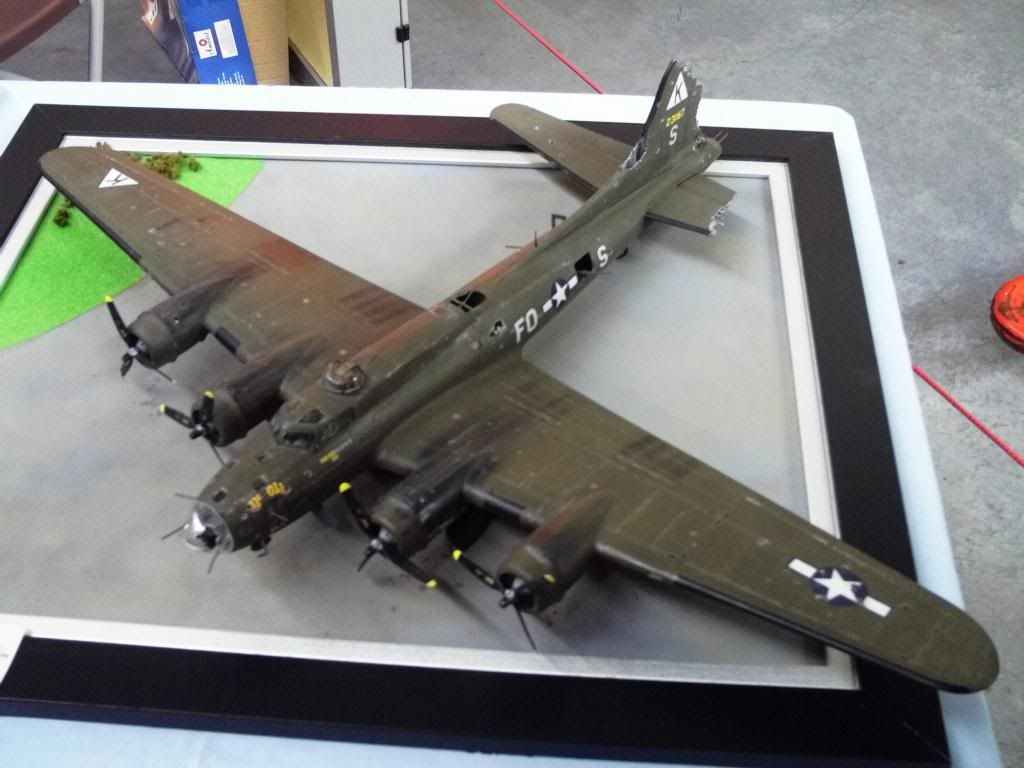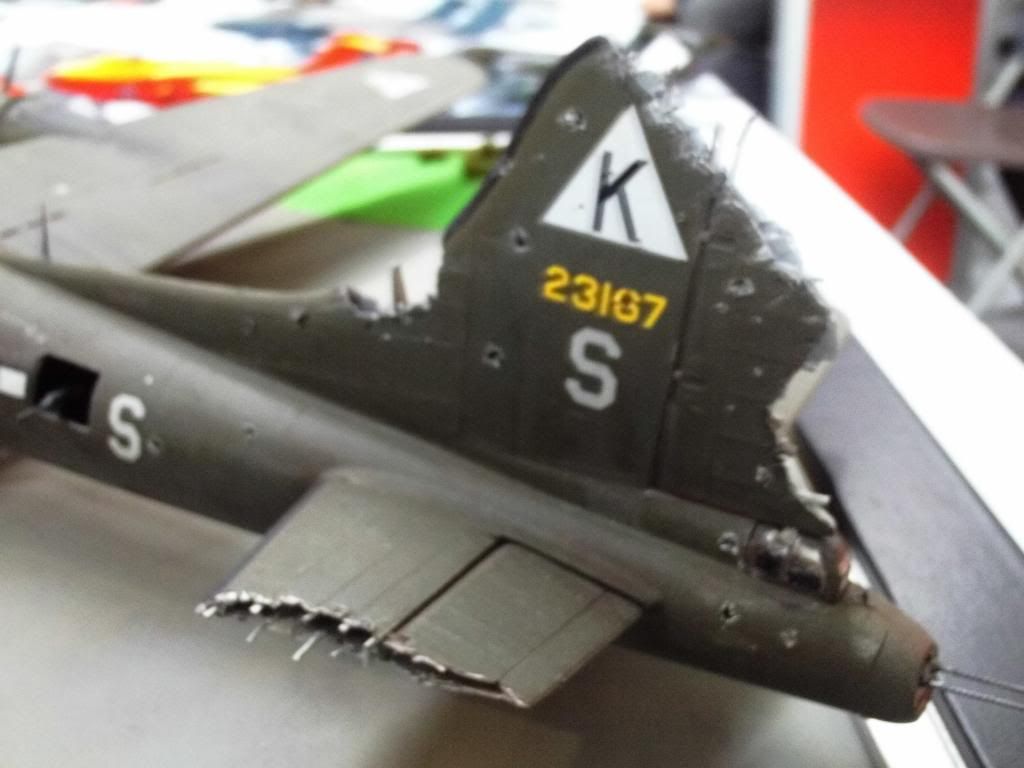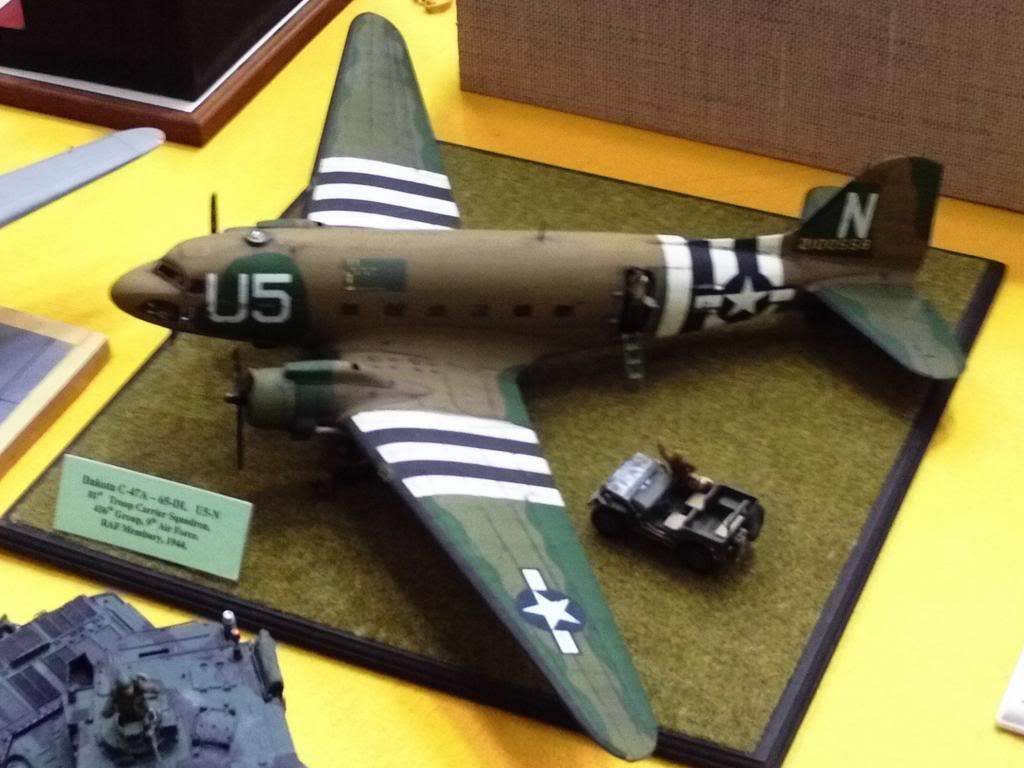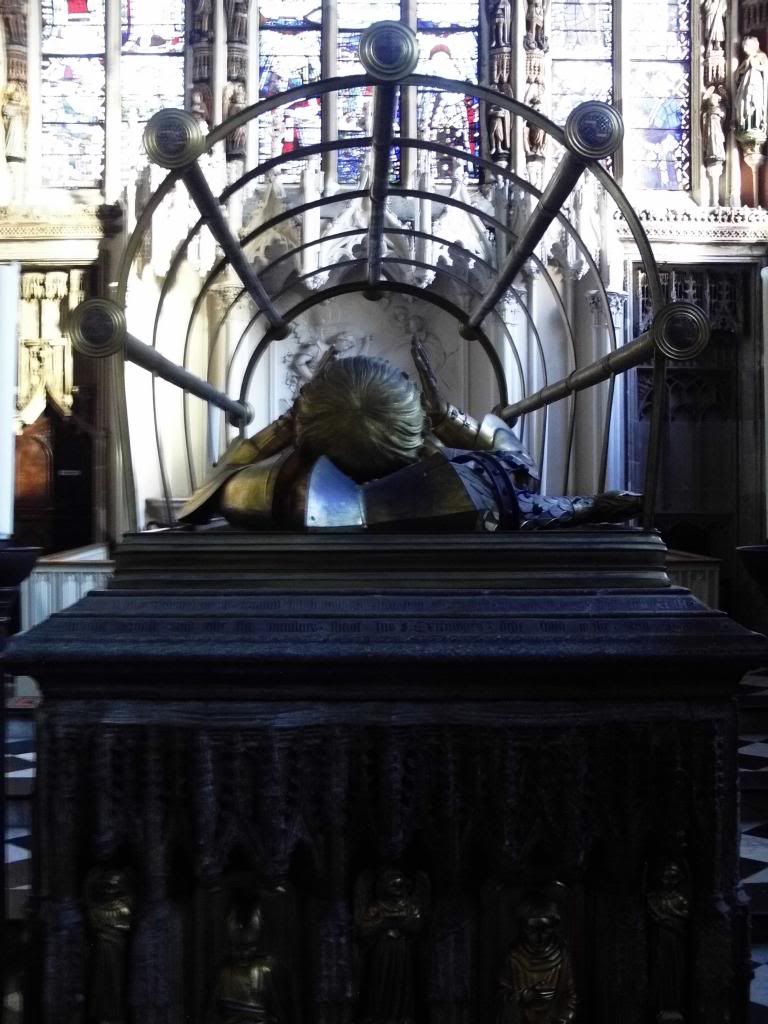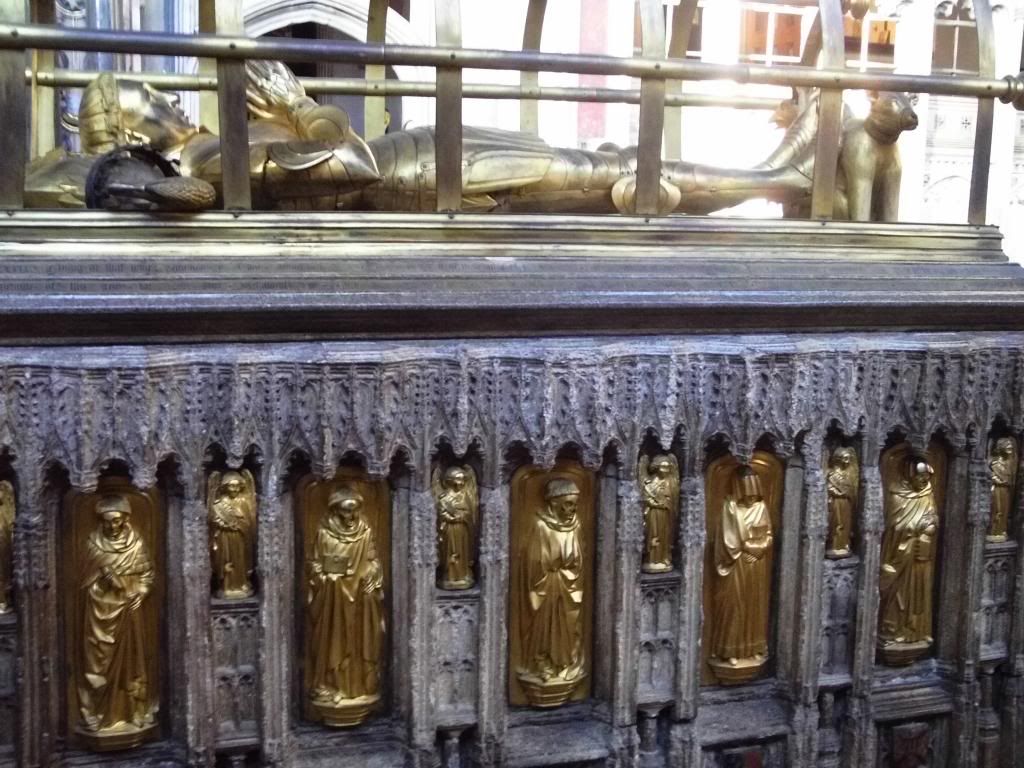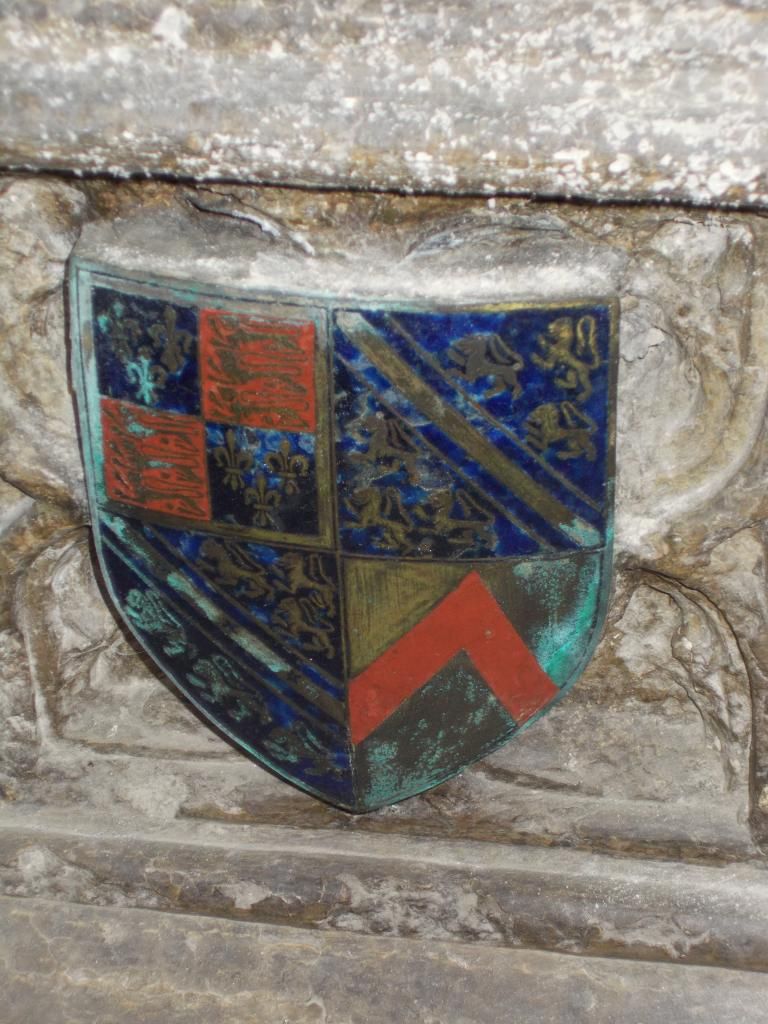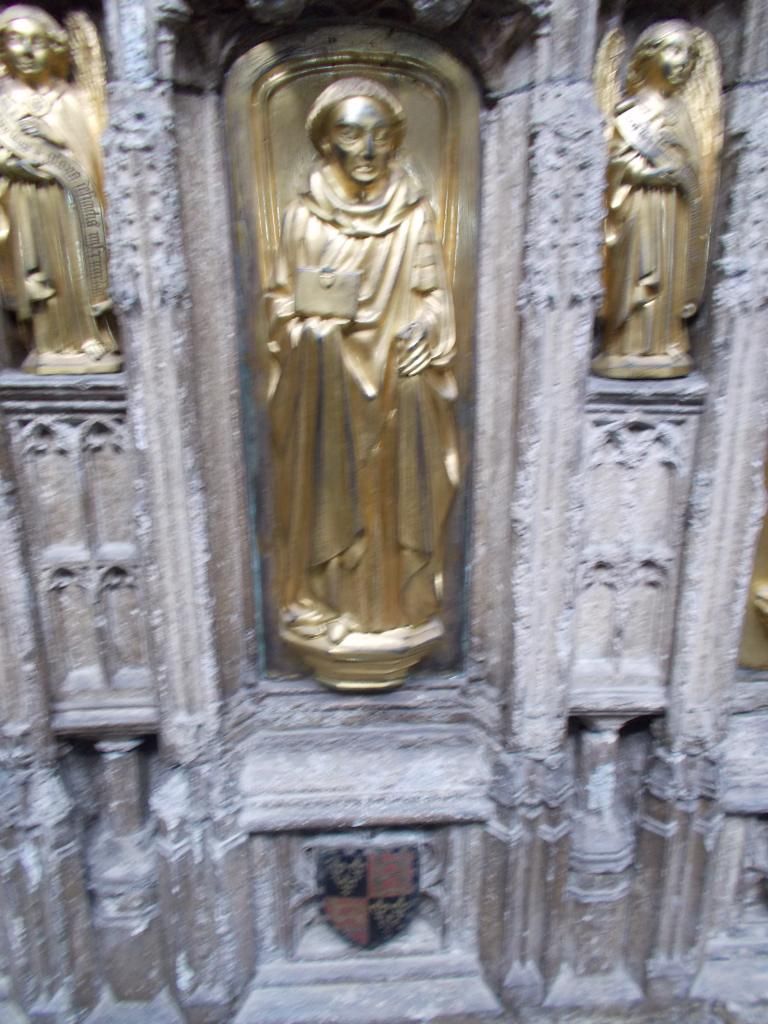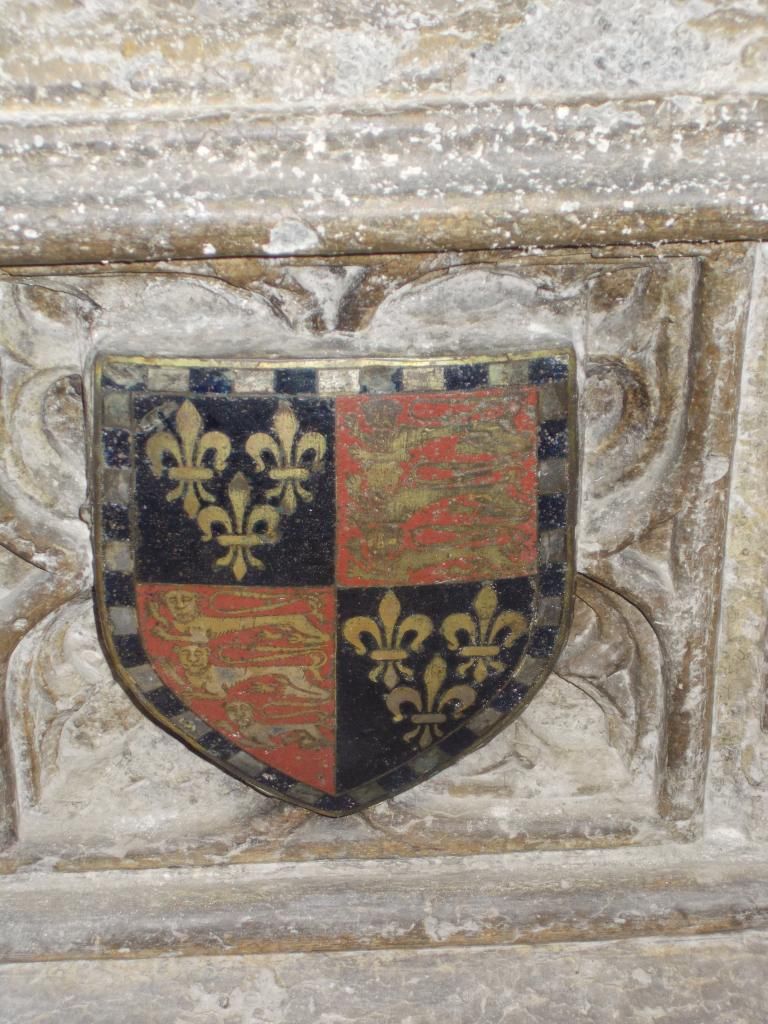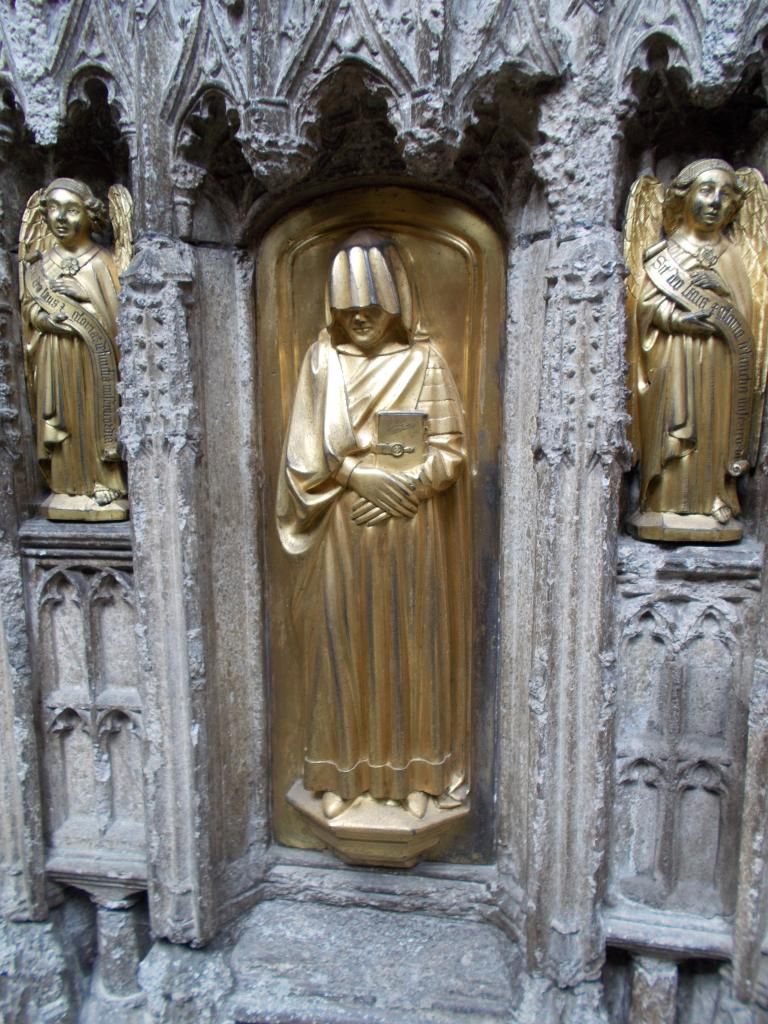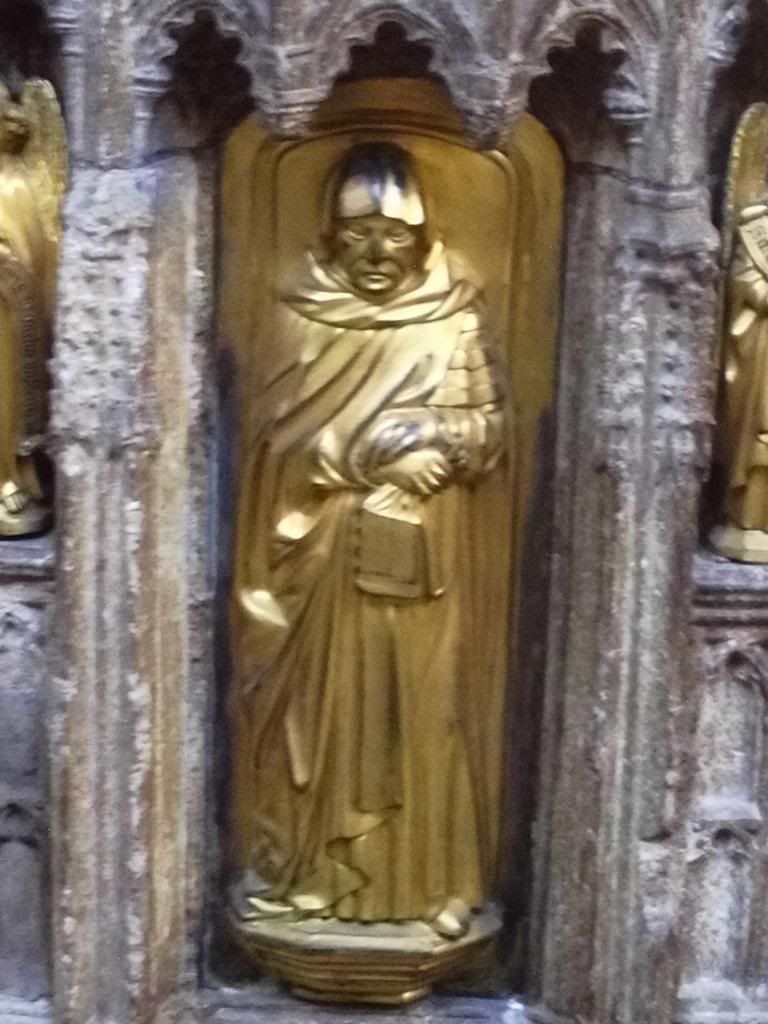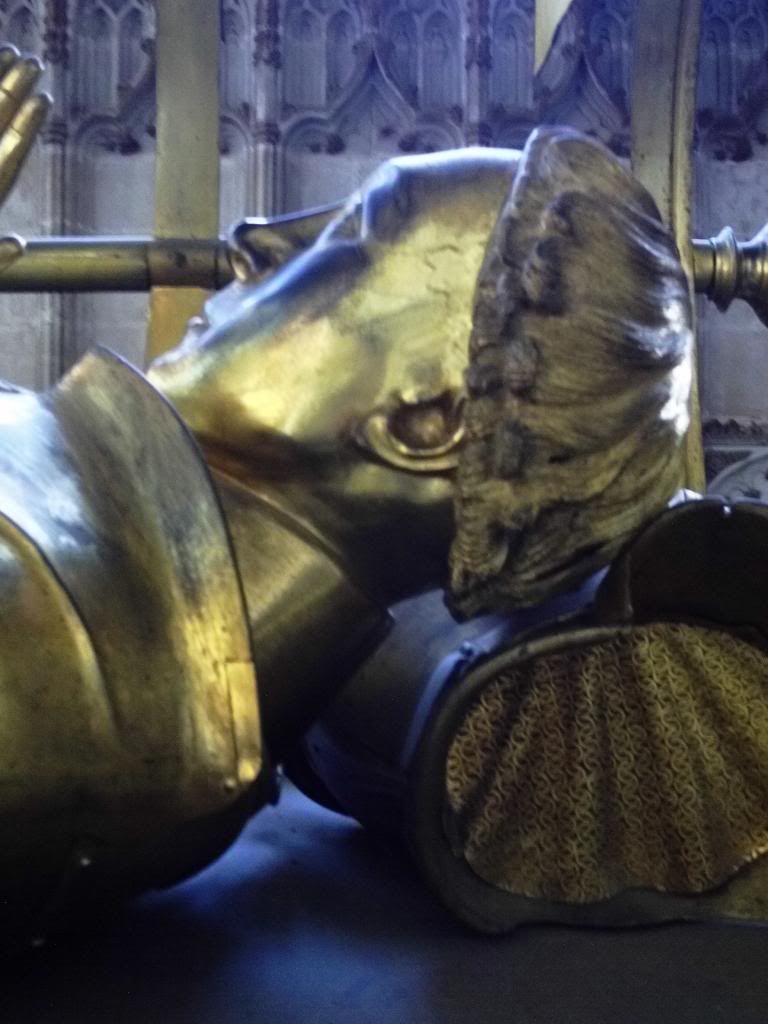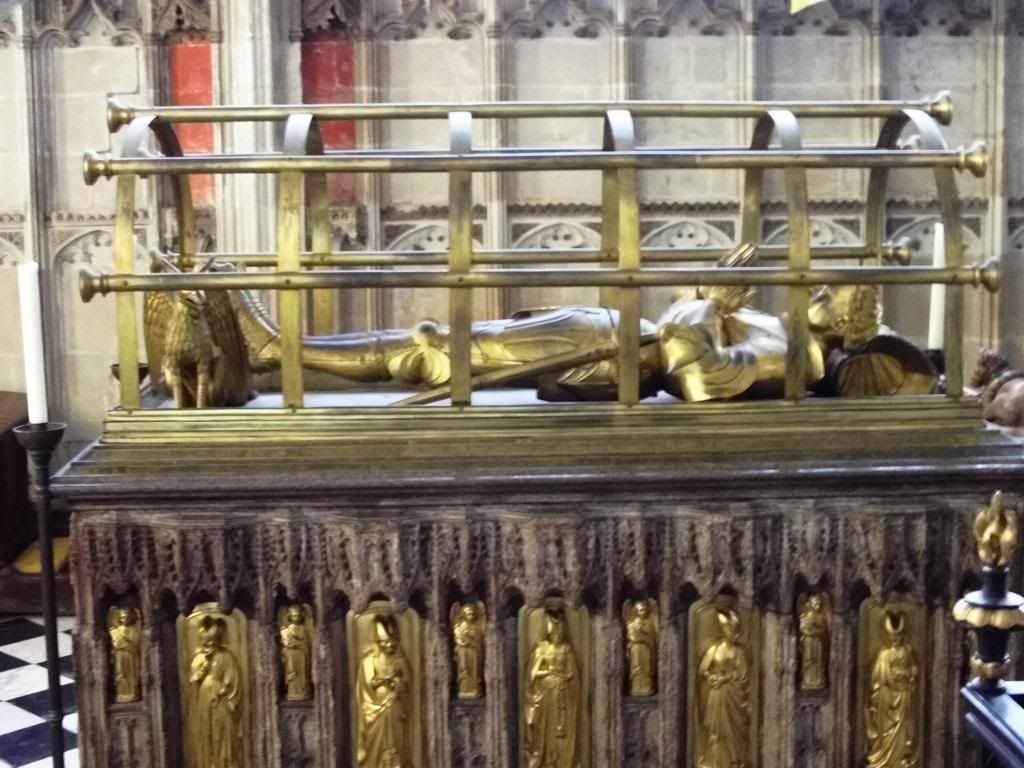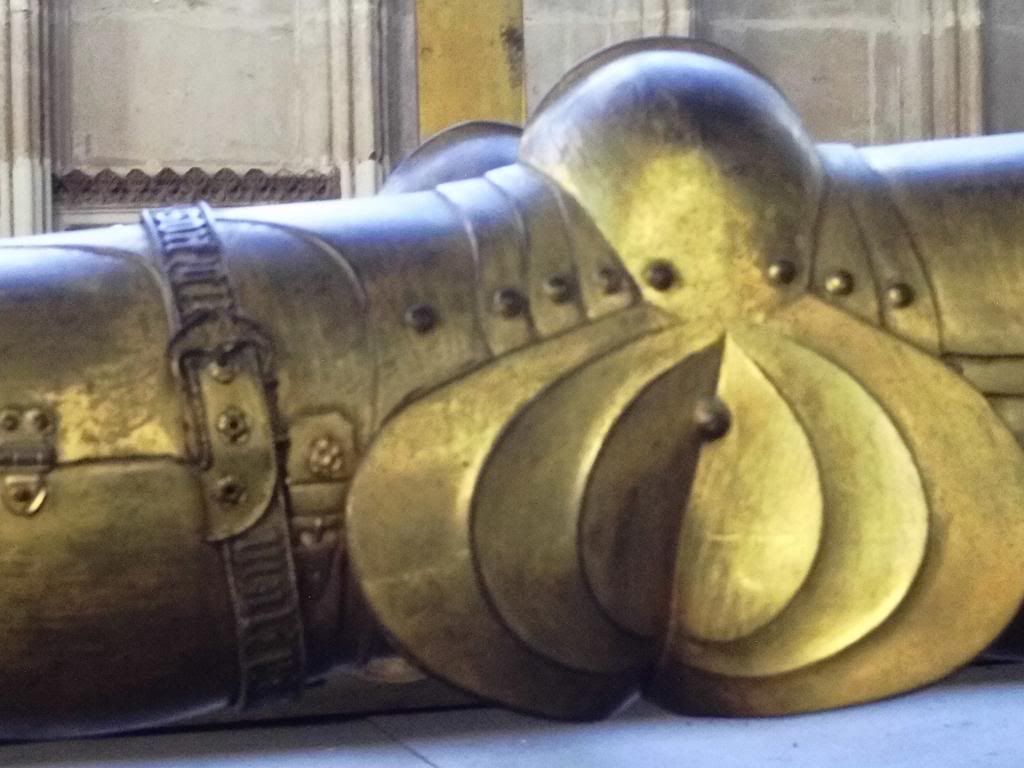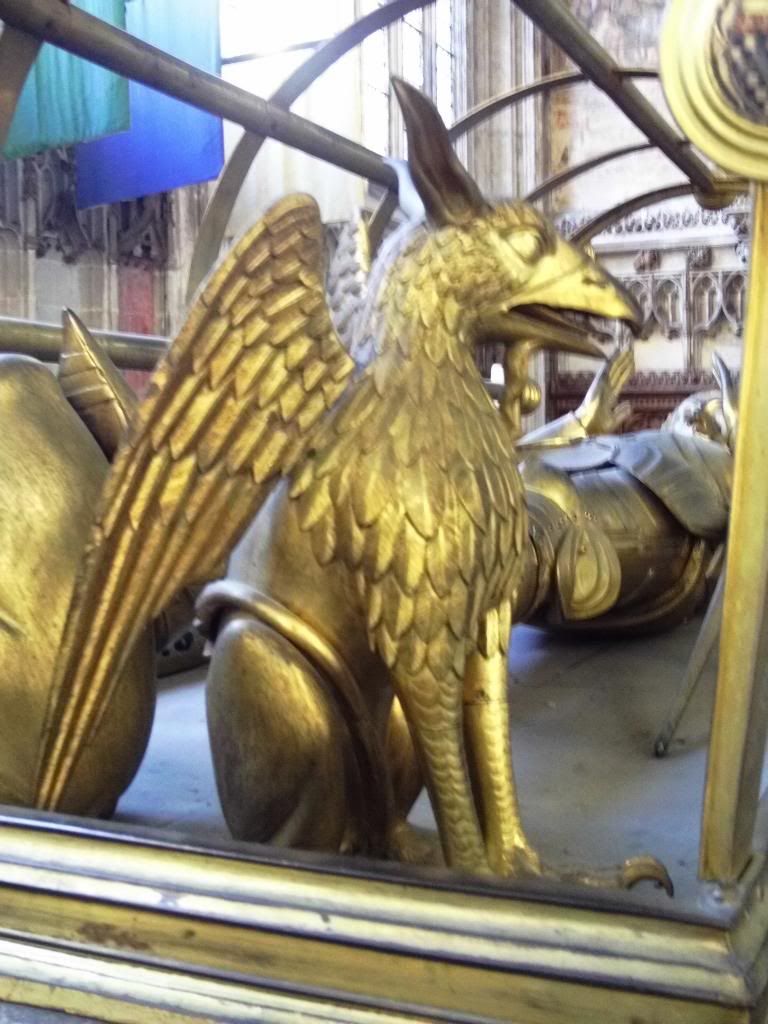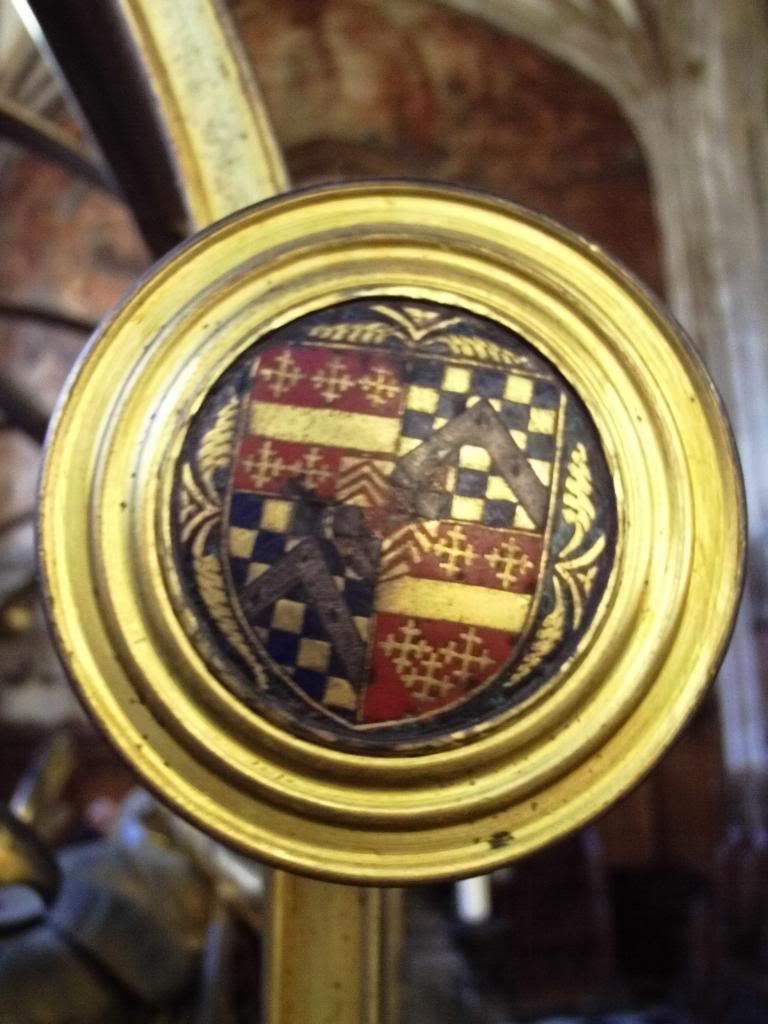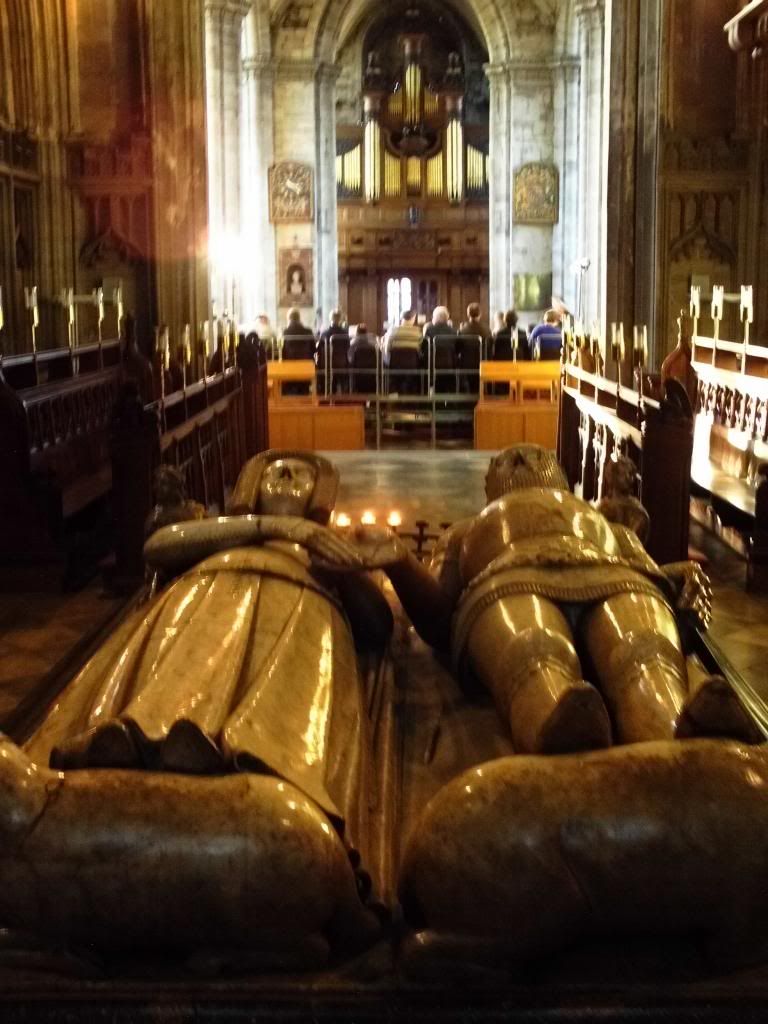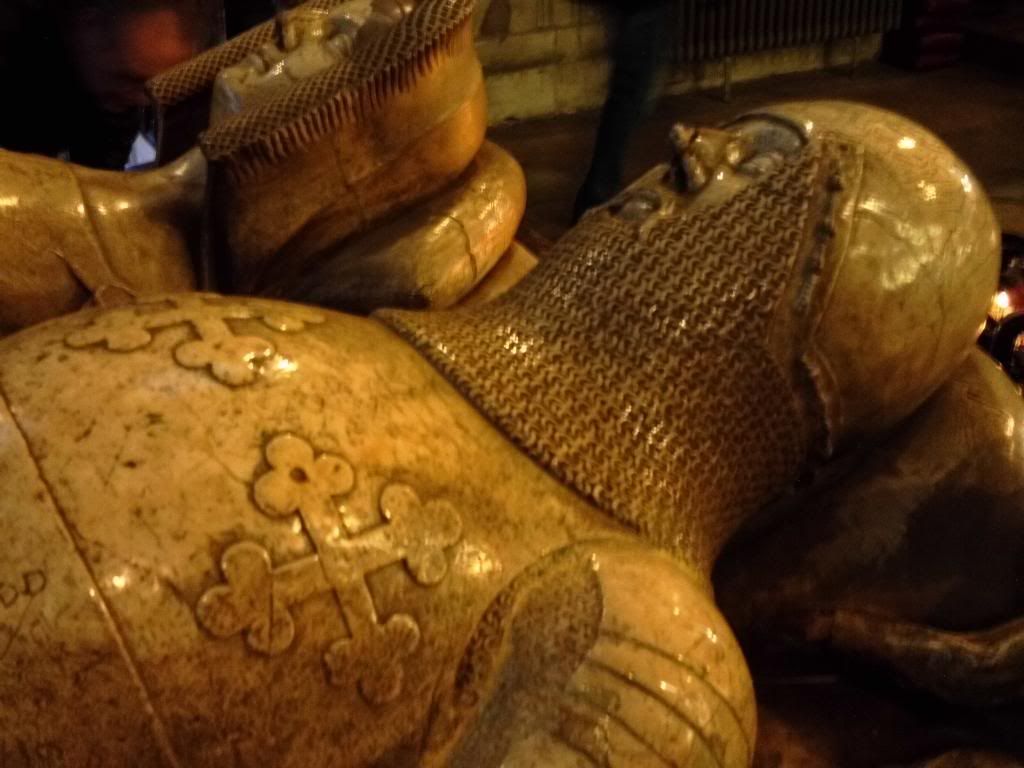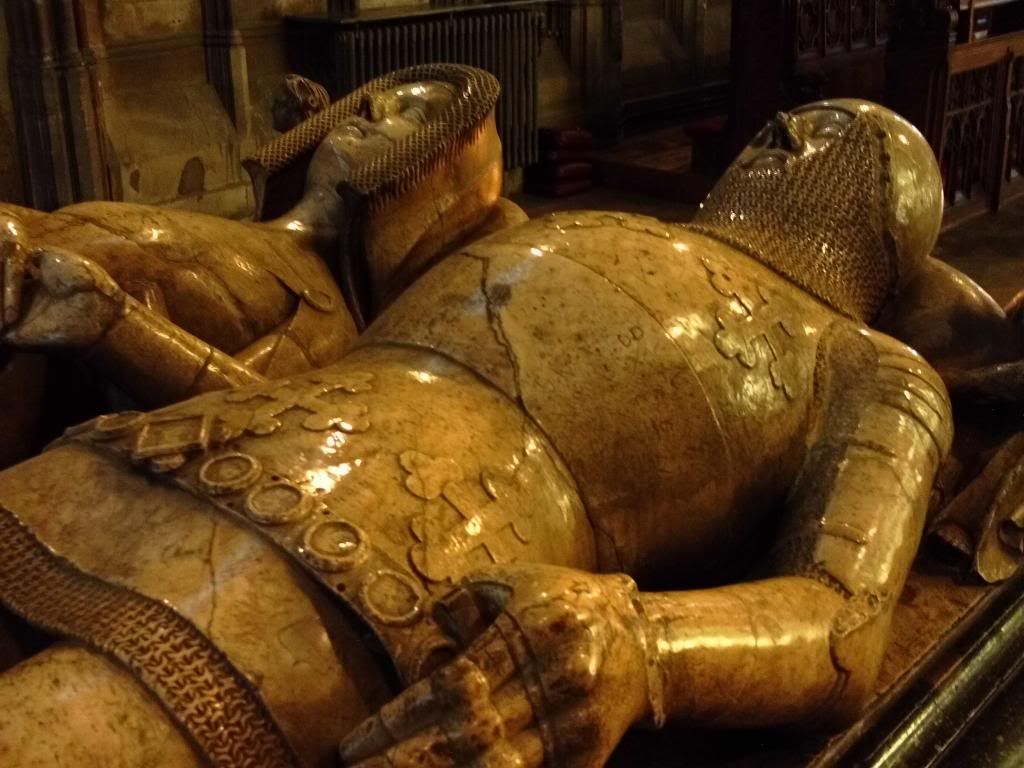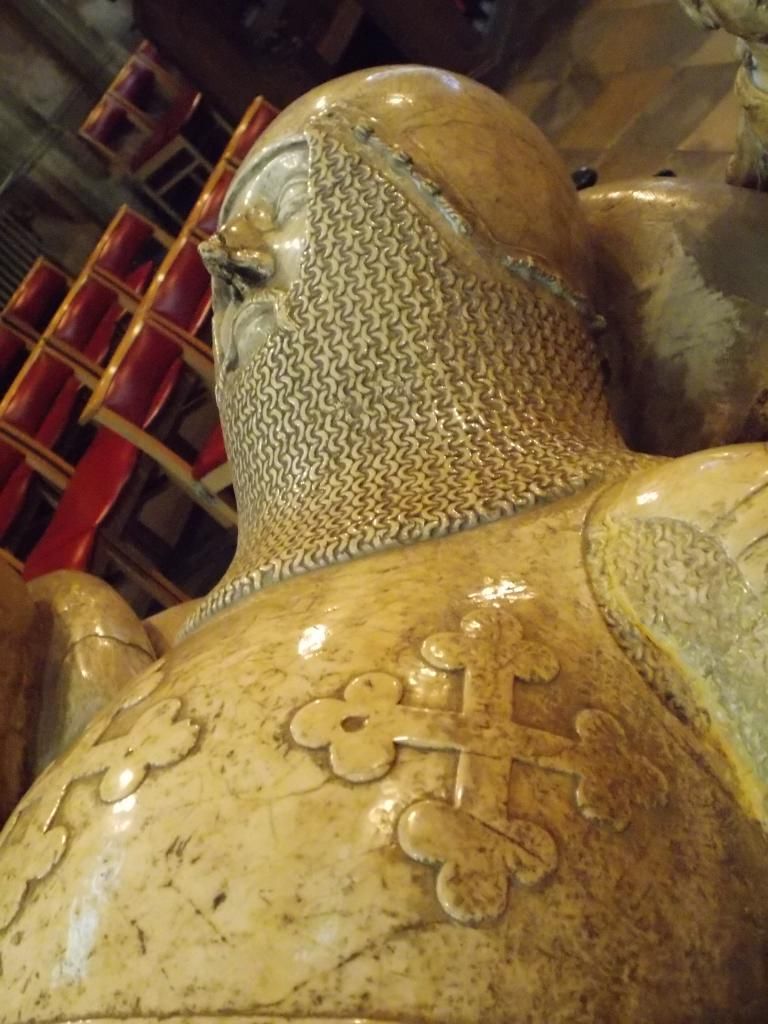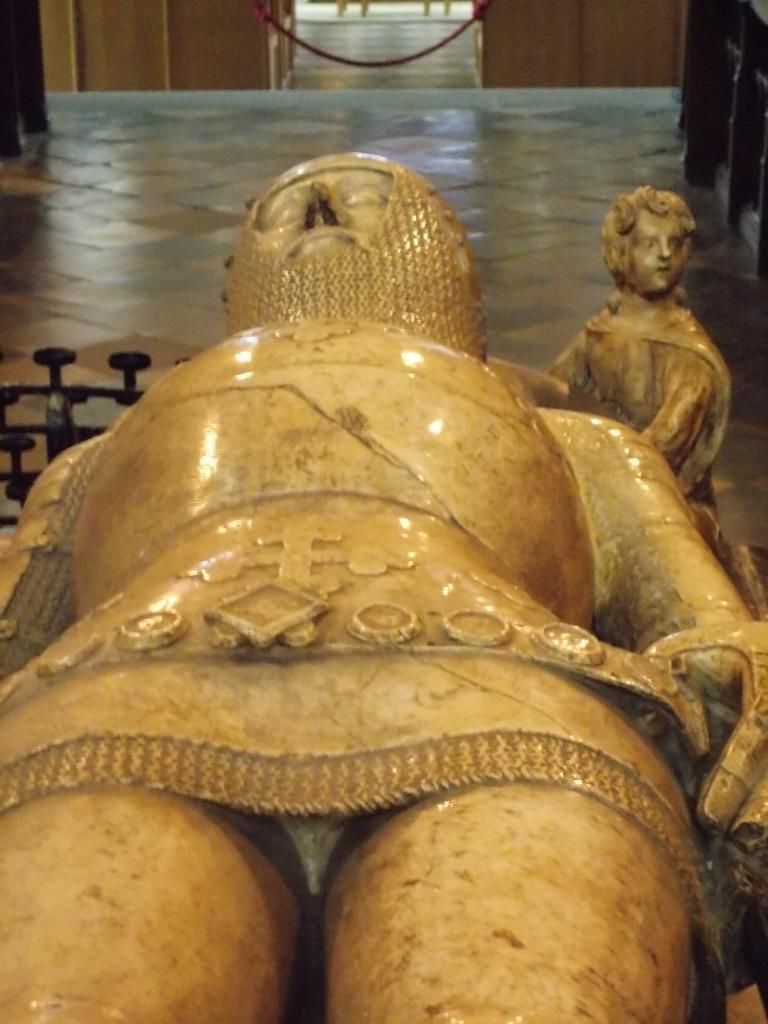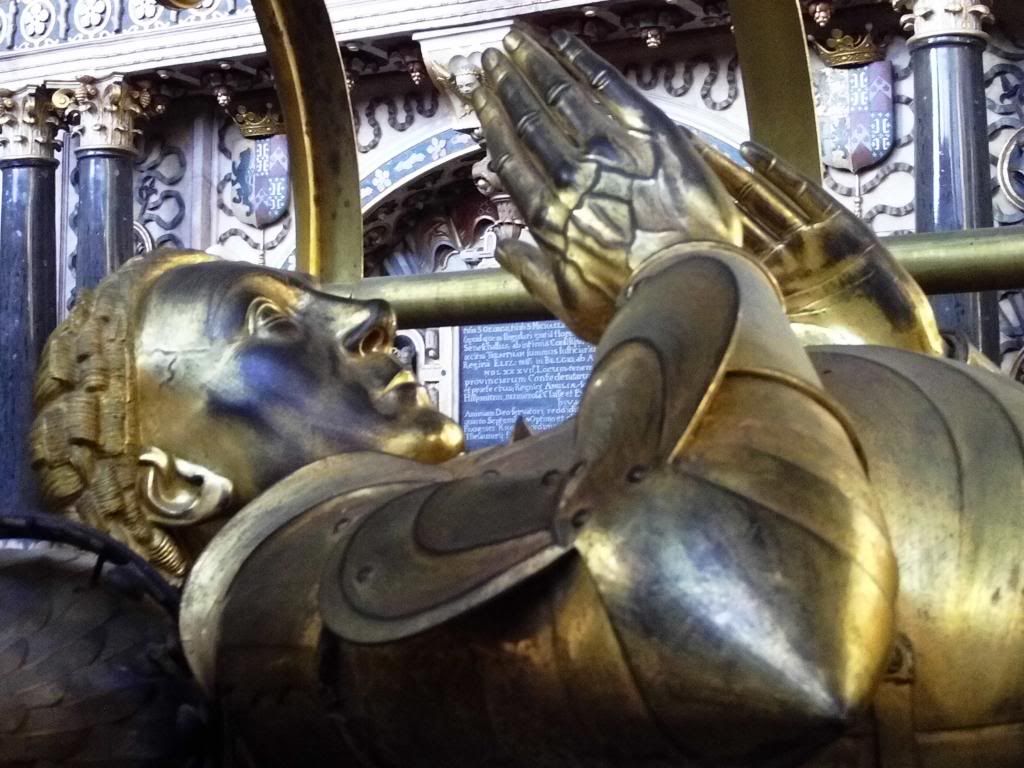 |
| Richard Beauchamp, 13th Earl of Warwick |
In the 'Wars of the Roses A Field Guide & Companion' author Peter Bramley states that the Beauchamp Chapel, Collegiate Church of Saint Mary in Warwick contains "probably the finest medieval non royal church monuments in England.." The chapel was built to house the remains of Richard Beauchamp, 13th Earl of Warwick, grandson of
Thomas Beauchamp, 11th Earl of Warwick. As captain of Calais and Rouen, and the Custodian of Rouen Castle, he is perhaps best know for overseeing the trial and execution of Joan of Arc in 1431. As was the case with his grandfather, it was during the Hundred Years War that Richard Beauchamp (pronounced 'beach-um' not 'bow-champ' like I used to as a kid) made his fame and (further) fortune.
 |
| Beauchamp Chapel, Collegiate Church of Saint Mary, Warwick |
Richard Beauchamp married into the Despencer family and fortune in 1422 becoming one of the richest men in the country.
Beauchamp had close personal connections with Henry V; in 1410 he was made a member of the royal council, and was Lord High Steward at the coronation of Henry V in 1413. He was present at the siege of Harfleur in 1415 and at Caen when it was sacked in 1417. When Henry V died in 1422, Beauchamp was appointed one of the councilors for the infant king Henry VI. He went on to capture Pontorson, Normandy in May 1426 where the garrison were massacred but he himself was later defeated at Montargis southeast of Paris by John, Bastard of Orleans. In 1428 Beauchamp was appointed and Guardian of Henry VI and was his tutor from 1428 - 1437.
Richard died in Rouen, Upper Normandy on 30th April 1439 probably worn out by the constant campaigning.
The combined tomb, effigy and hearse of the Earl is rightly the focal point of this impressive chantry chapel built according to directions left in his will. The shields on the tomb read like a who's who of medieval England. These include the family names of: Beauchamp, Newburgh, Clare, Despenser, Montagu, Monthermer, Neville, Bohun, Stafford, Talbot, Strange, Furnival and Latimer.
This is not however, as is often thought, the tomb of the famous 'Warwick the Kingmaker', Richard Neville was Beauchamp's son-in-law. Beauchamp's youngster daughter, Anne, married the War of the Roses powerbroker Neville in 1436 who at one stage held two Kings of England under his control, hence the nickname.
The small male and female figures seen around the base of the tomb, know as 'weepers', symbolise the real family, friends and dignities who would mourn the death of the person represented. One of them is of particular interest as it represents the only near contemporary image we have of the Kingmaker; whether it is a true likeness is impossible to say.
Ironically when Beauchamp's remains were finally laid to rest in 1475 most of the portrayed weepers were dead; only three, all female, were still alive. In a fitting commentary on the turbulent times when the tomb was installed all of the five male weepers shown on the south side of the monument had already suffered violent deaths.
From left to right the main (large) weepers represent:
- Richard Neville, Earl of Salisbury. Younger son of Ralph Neville Earl of Westmoorland. Killed - Battle of Wakefield 1460.
- Edmund Beaufort, Duke of Somerset. Great Grandson of King Edward III (John of Gaunt). Killed - 1st Battle of St. Albans 1455.
- Humphrey Stafford, Duke of Buckingham. Killed - Battle of Northampton 1460.
- John Talbot, Earl of Shrewsbury. Killed - Battle of Castillon 1453.
- Richard Neville, Earl of Warwick and Salisbury. The 'Kingmaker'. Killed - Battle of Barnet 1474.
Richard Neville, Earl of Salisbury
Arms - Humphrey Stafford, Duke of Buckingham.
Edmund Beaufort, Duke of Somerset
Arms - Edmund Beaufort, Duke of Somerset.
John Talbot, Earl of Shrewsbury
Richard Neville 'the Kingmaker'
The tomb was built between 1448 and 1453. Surviving contracts reveal some of the (surprising modern sounding) names:
- William Austen of London - cast the brass effigy
- John Bourde - supplier of the Purbeck marble
- John Massingham - carver,
- Barthilimew Lambespring - goldsmith
- John Essex - marbler
- Thomas Stevyns - coppersmith.
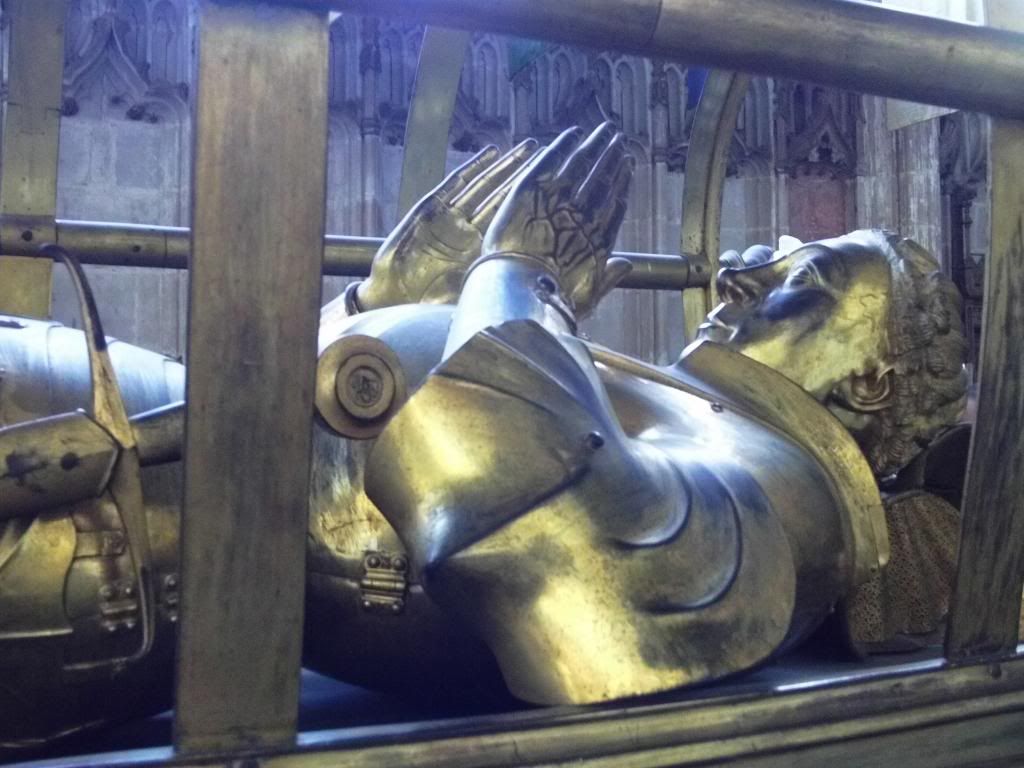 |
| Richard Beauchamp, 13th Earl of Warwick |
Richard Beauchamp - note the contemporary fashionable haircut
& the vein detail on the brow of the head
Order of the Garter detail
& Poleyne with fan plate detail
Roundel quartered with the arms of Beauchamp & Newburgh (note also the Clare arms in the forth quarter).
The chapel also houses the tombs of Robert Dudley, Earl of Leicester, his brother Ambrose Dudley, Earl of Warwick, and Robert's son, the “Noble Impe” but I'll detail these characters when I eventually finish making the WoTR retinue of John Sutton, Lord Dudley.
The nave and tower of the main church were destroyed in the great fire of Warwick in 1694. The flames only stopped short of the chapel's entrance and the walls and ceilings still reveal damage from the fire.
St. Mary's also contain numerous other points of interest including the chapel of the Royal Warwickshire Regiment (Royal Regiment of Fusiliers), an ancient ducking stool and the grave of Sir Fulke Greville, 1st Baron Brooke who was murdered at the nearby castle but I'll let you discover all these for yourself.




